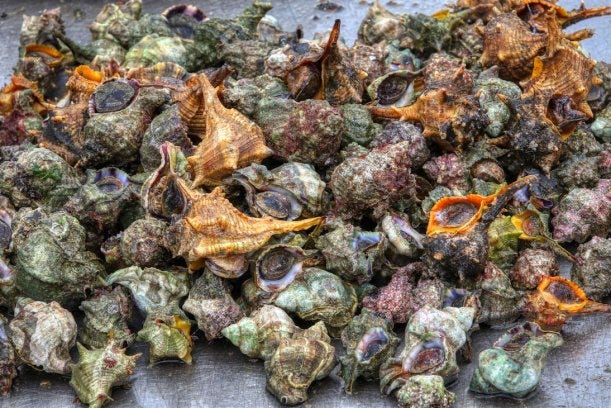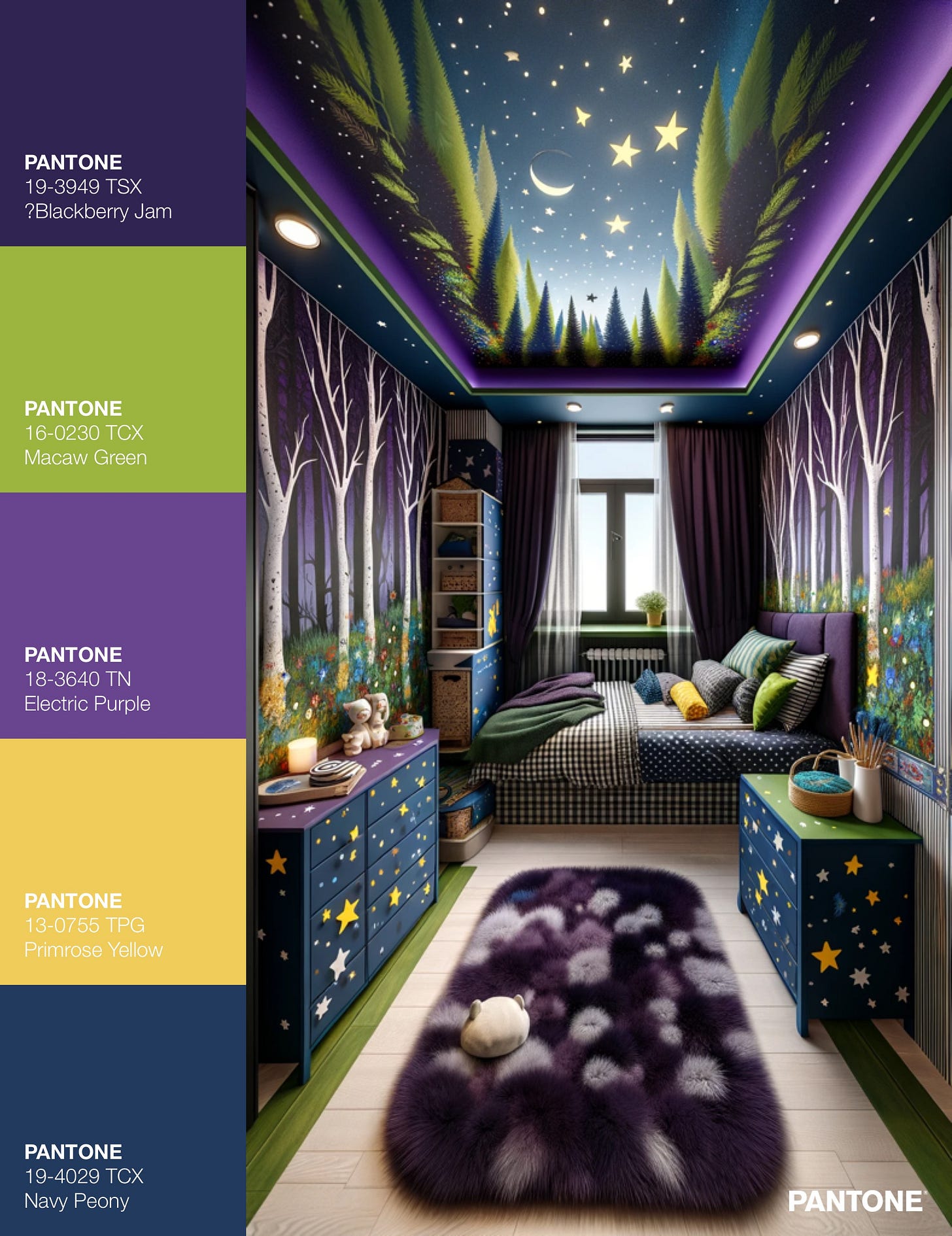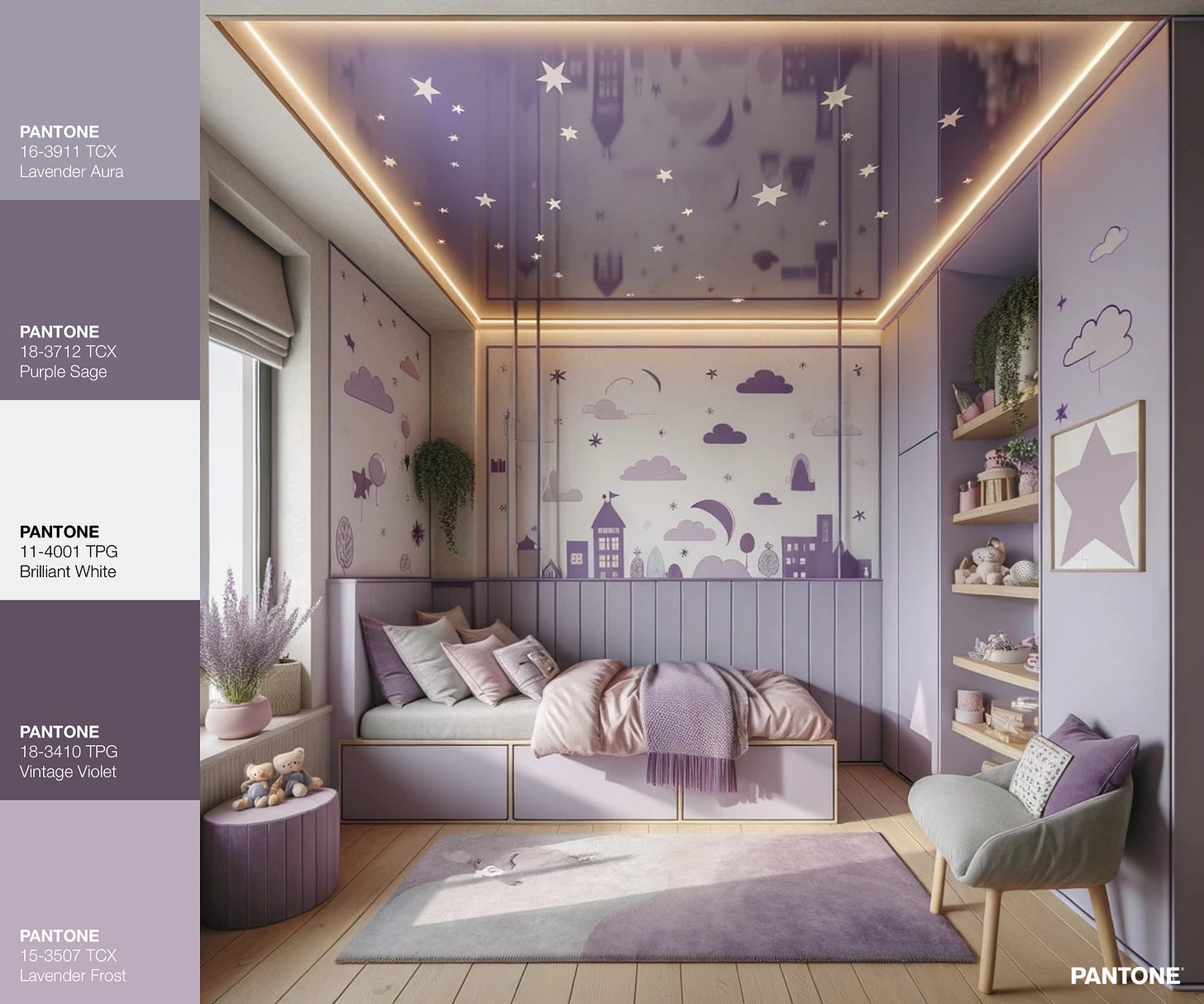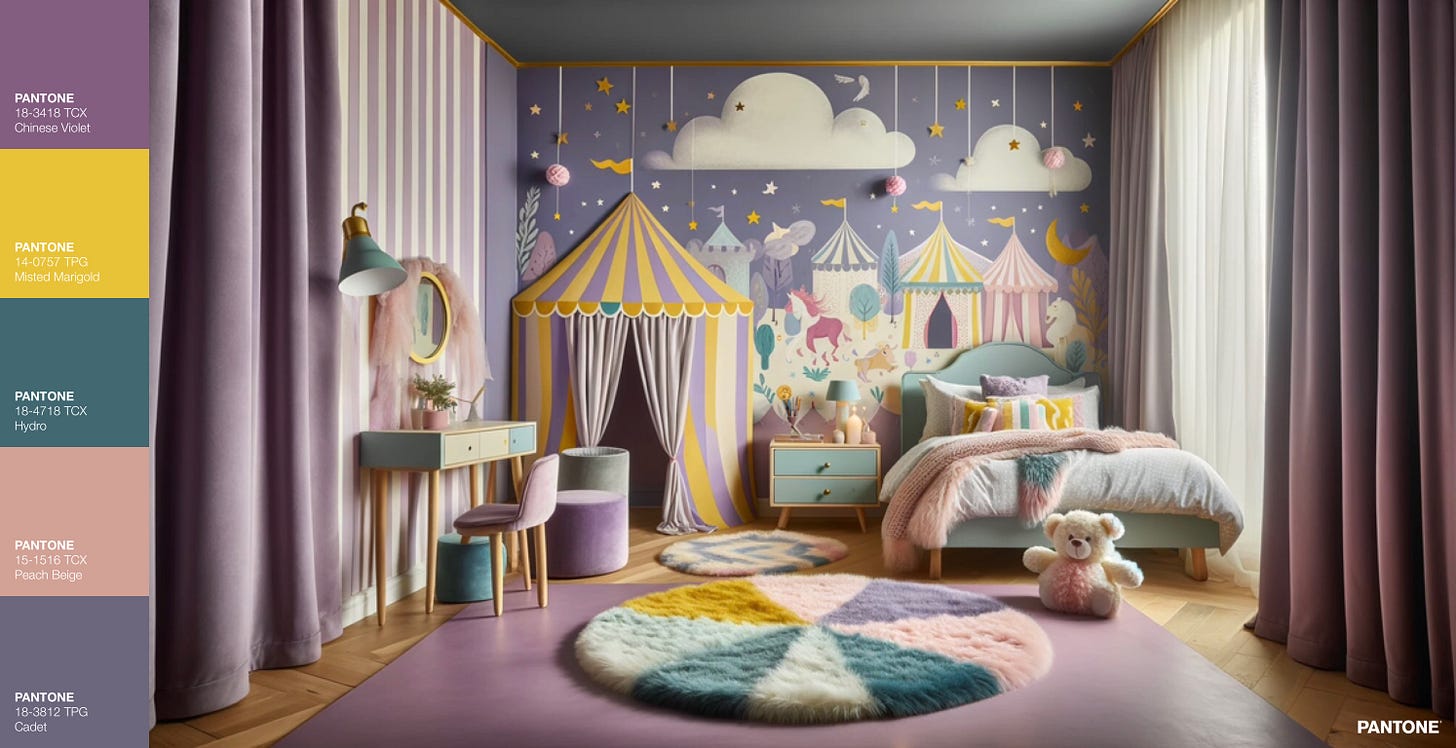Last week I attended a magic show by Michael Vincent, a professional magician who has travelled the world for decades astounding audiences of all ages with seemingly impossible acts.
Despite knowing with 100% certainty that there was a rational explanation for everything I saw, each trick was a delightful surprise that I had not seen or expected.
Drawing on their limited life experiences, for children lucky enough to live in peace, much of normal daily life holds magical moments of surprise. For adults lucky enough to live in peace, if we want that element of surprise, we often have to seek it out. I seek it in colour combinations and spaces and places. I’ve lived in 8 countries on 4 continents, hungry for that feeling. I use artificial intelligence for interior design because it helps me create that feeling.
So, today I am sharing a few children’s bedrooms, inspired by magic. When viewing them, remember that these are rooms imagined for children’s eyes and hearts, not yours! :-)
I created the images using Midjourney, Dall-E 3, and the Pantone Studio App.
ENCHANTED EXPLOSION: There’s no commentary needed on this one I think! For the right child, this is heaven in a room. Remember, it’s their room, not yours!
SECRET FOREST: Like sleeping amongst magic trees on a dark starry night! The smallness of the space adds to the dramatic effect.
GENTLE WHISPERS: A room of refuge, for the child for whom the movements and sounds of the outside world are often too much.
PATTERNED MIST: The enveloping swirls of the mural create an illusion of being transported to a misty mystical garden of colour.
CIRCUS CALM: This is a good example of the power of a colour palette. Though the circus theme would usually evoke loud colours and sounds, this pastel palette creates a calm atmosphere that is kept youthful and fun with the circus theme. I love the detail of the tent that looks like it’s emerging from the world of the mural.
FUN FACTS ABOUT PURPLE
Purple has long been associated with magic as well as royalty. This may have been because for a long time, producing the colour purple was a laborious and expensive endeavour in some parts of the world, therefore only available to small segment of society.
In present day Lebanon, a dye known as Tyrian Purple was produced in a city called Tyre from as early as 1200 BCE until 1453 when Constantinople came under control of the Ottoman Empire, ending the production of the dye. The dye was produced by extracting the mucous of Murex sea snails. The process was time consuming and could require over 10,000 snails to produce enough dye to colour one garment. Huge mounds of murex shells can still be found in the region to this day.
Greek mythology includes a story of Heracles walking along a beach with his dog. Upon seeing a murex shell, the dog bites the shell which turns the dog’s snout purple. Thus having discovered purple dye, Heracles shares the discovery with humans. Flemish master, Peter Paul Rubens depicted this story in his Hercules and the Discovery of the Secret of Purple, in about 1636. The shell depicted in the painting, however, incorrectly depicts the shape of a murex shell.


Over time, purple became associated with great wealth and royalty, and laws were based in the region which restricted the use of purple for only the highest echelons of society. In the Great Palace of Constantinople, Byzantine empresses gave birth in the Porphyry Chamber, which had walls of a purple rock called porphyry. This gave rise to the expression , ‘born in the purple’ or ‘born to the purple’, referring to someone of royal or very privileged heritage.
I like purple too :-), especially with mint green!
Hope you enjoyed!
-Vanessa :-)









So fun Vanessa! The choices and combinations of patterns makes these rooms really come together.
I love the Patterned Mist room! Very psychedelic and dreamy. That could be my room!